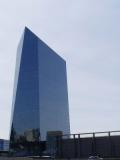
The annual U.S. News & World Report is in, as of March 10, and law schools deans can cease biting their nails and start packing their bags. Well, some of them. Others can pop some Champagne. But nobody on the Top 10 need get too consternated: it mostly stayed the same, with Yale on top, followed by Harvard Law School in the No. 2 spot. Stanford Law, however, moved up from No. 3 to the No. 2 spot, sharing a spot with Harvard.
There was some other shuffling with the higher ranked schools, as Duke Law School scooted from No. 10 to No. 8 and while The University of Michigan Law School stumbled from No. 10 to No. 11.
Check out this exclusive article where a top legal recruiter ranks and analyzes the top 10 law schools.
Movement is subtle and momentous at the level of the top 10, but those ranked between 50 and 149 saw more drastic changes, as a matter of course, with 13 of them changing their ranking by 20 spots. For instance, Howard University School of Law and St. John's University School of Law both received a 25 spot improvement.
"I'm not surprised," said Howard University School of Law Dean Danielle Holley-Walker. "It shows that our law school is very focused on our mission of creating leaders both in corporate law and in social justice. Even in difficult economic times, we continue to do well in placing our students in jobs."
As do all the rest, necessarily, so what was the actual difference with Howard? That is open to speculation, and a lot of this re-ranking seems arbitrary. One of the metrics, after all, which amounts to determining 40 percent of the ranking, is how professionals rank the prestige of each school. A hoity-toity popularity contest, in other words. LSAT and grade-point account for another 25 percent, job placement - which some say should be given considerably more weight - accounts for 20 percent, and faculty resources accounts for 15 percent.
U.S. News stuck to their basic algorithm for determining rank, with one notable exception: they grant less weight to those graduates who found employment at their own law school. Some schools could arguably game the system and artificially increase their rank in the past by hiring their own graduates. So now, while those jobs still hold some heft, more weight is given for those graduates who hold full time jobs at law firms.
While it appears this change has not mattered much for most universities, one seemed to be greatly affected. Lewis and Clark Law School, which hires a lot of its students, has fallen 20 points to No. 94.
Learn the 10 Factors That Matter to Big Firms More Than Where You Went to Law School
Below is a chart featuring the top 20 law schools according to U.S. News in 2016:
| Ranking | Law School Name | Full-time enrollment | 2014-15 tuition and fees | 2014 acceptance rate |
|---|---|---|---|---|
| 1 | Yale University | 607 | $56,200 | 8.9% |
| 2 | Harvard University | 1,752 | $55,842 | 15.4% |
| 2 | Stanford University | 577 | $54,366 | 9.1% |
| 4 | Columbia University | 1,170 | $60,274 | 18.9% |
| 4 | University of Chicago | 604 | $55,503 | 18.4% |
| 6 | New York University | 1,423 | $56,838 | 30.1% |
| 7 | University of Pennsylvania | 756 | $56,916 | 16.4% |
| 8 | Duke University | 643 | $55,588 | 20.9% |
| 8 | University of California ?Berkeley | 890 | $48,166 | 20.2% |
| 8 | University of Virginia | 1,005 | $51,800 | 18.1% |
| 11 | University of Michigan ?Ann Arbor | 1,000 | $51,398 | 26.9% |
| 12 | Northwestern University | 737 | $56,434 | 24.7% |
| 13 | Cornell University | 595 | $59,360 | 30.3% |
| 14 | Georgetown University | 1,719 | $53,130 | 29.0% |
| 15 | University of Texas ?Austin | 1,025 | $33,162 | 24.5% |
| 16 | University of California ?Los Angeles | 992 | $45,226 | 28.1% |
| 17 | Vanderbilt University | 525 | $49,722 | 34.7% |
| 18 | Washington University in St. Louis | 749 | $50,152 | 30.1% |
| 19 | Emory University | 819 | $49,734 | 36.8% |
| 20 | University of Minnesota ?Twin Cities | 681 | $41,222 | 41.5% |




